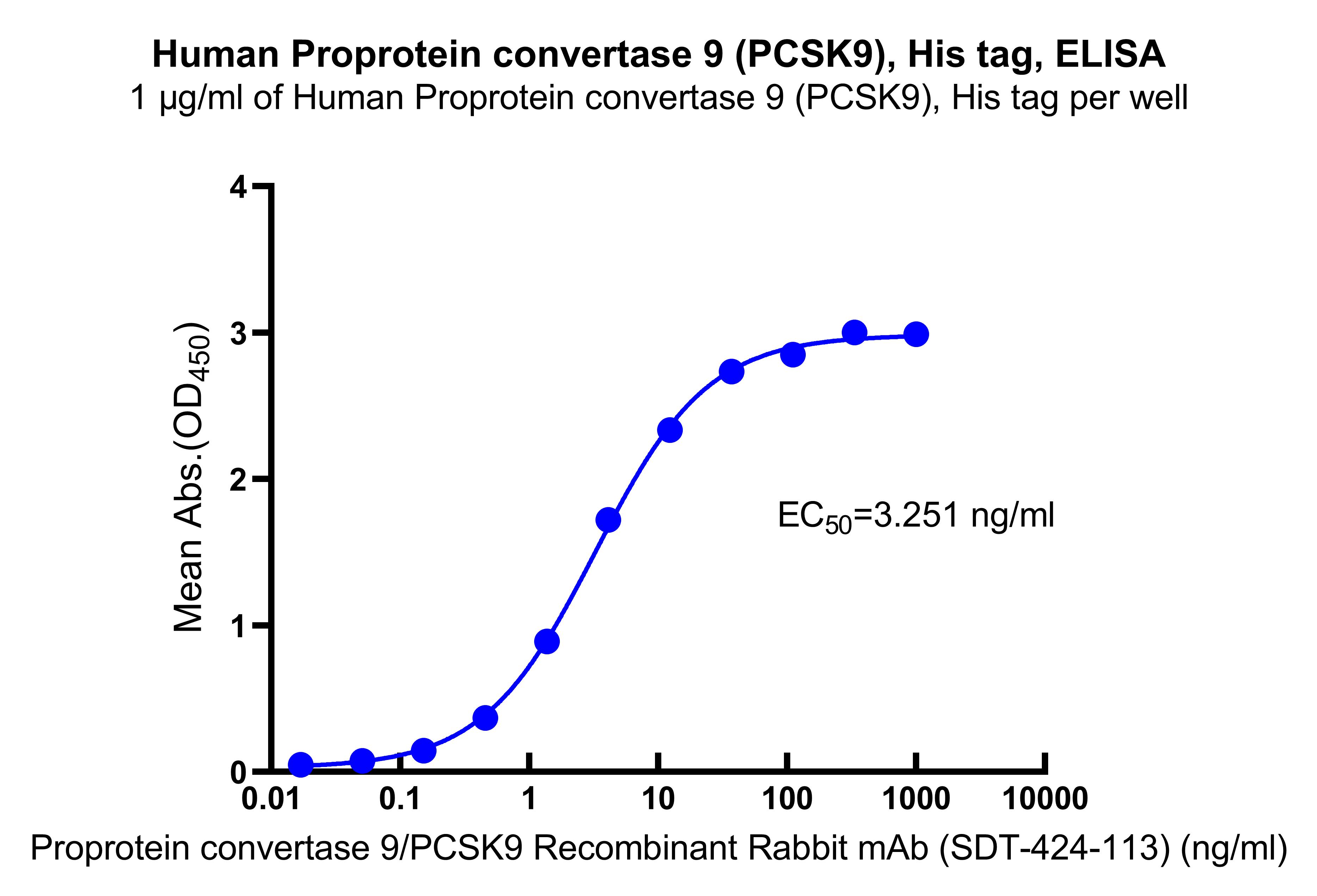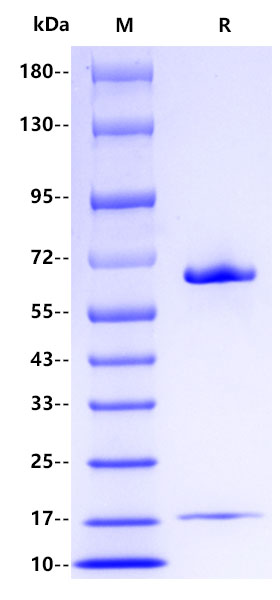Protein sequence(Q8NBP7, Gln31-Gln692, with C-10*His) QEDEDGDYEELVLALRSEEDGLAEAPEHGTTATFHRCAKDPWRLPGTYVVVLKEETHLSQSERTARRLQAQAARRGYLTKILHVFHGLLPGFLVKMSGDLLELALKLPHVDYIEEDSSVFAQSIPWNLERITPPRYRADEYQPPDGGSLVEVYLLDTSIQSDHREIEGRVMVTDFENVPEEDGTRFHRQASKCDSHGTHLAGVVSGRDAGVAKGASMRSLRVLNCQGKGTVSGTLIGLEFIRKSQLVQPVGPLVVLLPLAGGYSRVLNAACQRLARAGVVLVTAAGNFRDDACLYSPASAPEVITVGATNAQDQPVTLGTLGTNFGRCVDLFAPGEDIIGASSDCSTCFVSQSGTSQAAAHVAGIAAMMLSAEPELTLAELRQRLIHFSAKDVINEAWFPEDQRVLTPNLVAALPPSTHGAGWQLFCRTVWSAHSGPTRMATAVARCAPDEELLSCSSFSRSGKRRGERMEAQGGKLVCRAHNAFGGEGVYAIARCCLLPQANCSVHTAPPAEASMGTRVHCHQQGHVLTGCSSHWEVEDLGTHKPPVLRPRGQPNQCVGHREASIHASCCHAPGLECKVKEHGIPAPQEQVTVACEEGWTLTGCSALPGTSHVLGAYAVDNTCVVRSRDVSTTGSTSEGAVTAVAICCRSRHLAQASQELQGGGGSHHHHHHHHHH
12 months from date of receipt, -20 to -70 °C as supplied. 6 months, -20 to -70 °C under sterile conditions after reconstitution. 1 week, 2 to 8 °C under sterile conditions after reconstitution. Please avoid repeated freeze-thaw cycles.
Proprotein convertase subtilisin/kexin type 9 (PCSK9) is the 9th member of the proprotein convertase family of proteins that activate other proteins. PCSK9 is ubiquitously expressed in many tissues and cell types. PCSK9 binds to and degrades the receptor for low-density lipoprotein particles (LDL), which typically transport 3,000 to 6,000 fat molecules (including cholesterol) per particle, within extracellular fluid.Recent evidence indicate that PCSK9 is highly expressed in arterial walls such as endothelium, smooth muscle cells, and macrophages, with a local effect that can regulate vascular homeostasis and atherosclerosis.

Immobilized Human Proprotein convertase 9 (PCSK9), His tag at 1 μg/mL (50 μL/well) can bind Proprotein convertase 9/PCSK9 Recombinant Rabbit mAb (SDT-424-113) (Cat. No. S0B0234) with EC50 of 2.938-3.598 ng/ ml.

2μg (R: reducing conditions)